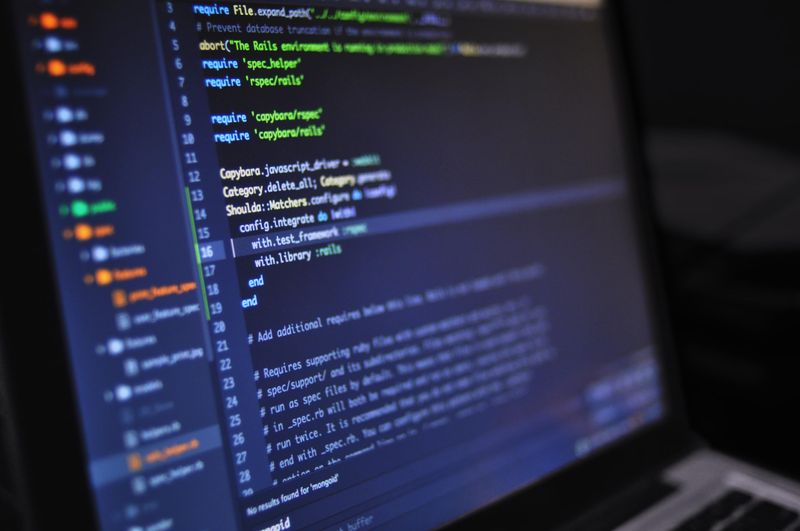The IT Professional’s Blueprint for Compliance
Introduction
The rapid advancement of technology in recent years has brought numerous benefits to society. However, along with these advancements come increased concerns about privacy, data protection, and online security. As businesses and individuals become more interconnected, it is essential for IT professionals to prioritize compliance with relevant frameworks and standards to safeguard data and ensure secure communication.
Framework Alignment
IT professionals are expected to align their work with various frameworks and standards designed to enhance privacy, protect data, and promote cybersecurity. Some of these frameworks include the Health Insurance Portability and Accountability Act (HIPAA), the National Institute of Standards and Technology (NIST) guidelines, the Center for Internet Security Critical Security Controls (CIS-CSC), the Essential Eight, and the Cyber Essentials framework.
HIPAA (Health Insurance Portability and Accountability Act)
HIPAA is a U.S. federal law that establishes national standards for securing protected health information (PHI). IT professionals working in the healthcare industry must ensure compliance with HIPAA regulations to protect sensitive patient data and maintain the trust of patients. This includes implementing appropriate safeguards, securing data during transmission, and regularly assessing and updating security measures.
NIST (National Institute of Standards and Technology)
The NIST provides a comprehensive set of cybersecurity guidelines and standards applicable to various sectors. IT professionals are encouraged to follow NIST frameworks, such as the Cybersecurity Framework (CSF), which provides a risk-based approach to managing cybersecurity. The CSF emphasizes the importance of identifying, protecting, detecting, responding to, and recovering from cybersecurity incidents.
CIS-CSC (Center for Internet Security Critical Security Controls)
CIS-CSC is a set of best practices designed to help organizations improve their cybersecurity posture. IT professionals should be aware of these controls, which include areas such as inventory and control of hardware and software assets, continuous vulnerability assessment and remediation, and secure configuration for hardware and software.
Essential Eight
The Essential Eight, developed by the Australian Signals Directorate (ASD), outlines eight strategies that effectively mitigate cybersecurity incidents. IT professionals should consider implementing these strategies to enhance their organization’s security. The areas covered by the Essential Eight include application whitelisting, patching applications, restricting administrative privileges, and implementing multi-factor authentication.
Cyber Essentials
Cyber Essentials is a UK government-backed scheme that provides a baseline set of security controls to help organizations protect themselves against common online threats. IT professionals should work towards achieving Cyber Essentials certification, demonstrating their commitment to cybersecurity and safeguarding their organization’s information.
Importance of Compliance
Compliance with these frameworks and standards is crucial for several reasons. First and foremost, it helps organizations protect their sensitive data and reduces the risk of data breaches. Compliance also helps build and maintain trust with customers, clients, and partners, as it assures them that the organization takes data protection and cybersecurity seriously. Additionally, compliance can provide legal protection, ensuring that organizations meet their obligations under relevant laws and regulations.
Editorial and Advice
The increasing number of cyber threats in today’s interconnected world demands a proactive approach from IT professionals. Compliance with frameworks such as HIPAA, NIST, CIS-CSC, Essential Eight, and Cyber Essentials is essential, but it should not be viewed as an end in itself. IT professionals must continually educate themselves, stay updated on the latest cybersecurity threats and best practices, and adapt their strategies accordingly.
Moreover, it is vital to integrate privacy and security considerations into every aspect of an organization’s IT infrastructure. This includes implementing robust data encryption techniques, securing communication channels, and regularly assessing vulnerabilities. IT professionals should also provide training and raise awareness among employees about the importance of following security protocols and best practices.
Collaboration with legal and compliance teams within organizations is crucial to ensure that IT professionals are up to date with relevant regulations and requirements. Additionally, working closely with software developers and vendors can help ensure that products and services are designed with privacy and security in mind.
To conclude, compliance with frameworks and standards is an essential starting point for IT professionals to safeguard data, protect privacy, and enhance cybersecurity. However, it is equally important for IT professionals to go beyond compliance and adopt a proactive and holistic approach to stay ahead of emerging threats and maintain the highest standards of online security.
Keywords: Privacy–wordpress, privacy, data protection, chatGPT, safeguarding data, online security, cybersecurity, privacy settings, data encryption, secure communication

<< photo by Igor Starkov >>
The image is for illustrative purposes only and does not depict the actual situation.
You might want to read !
- Thwarting EDR/XDR Exploits: Effective Countermeasures Unveiled
- The Evolving Threat Landscape: Analyzing the Implications of ConnectedIO’s Vulnerable 3G/4G Routers on IoT Security
- Ransomware Attacks Double Year on Year: The Urgent Need for Enhanced Cybersecurity Measures in 2023
- The Rising Threat of Credential Theft: How Dropbox Outpaces Microsoft SharePoint
- “AI Dreaming Beyond the Bars: Generative AI Jailbreaks Boundaries”
- Breaking Barriers: The Rapid Rise of Cloud Attacks in Just 10 Minutes
- Enhancing Your Digital Defense: Unveiling the Power of Security Configuration Assessment (SCA)
- Mastering the Dual Challenge: A Webinar on Guiding vCISOs through AI and LLM Security
- The Lingering Threat: The Resurgence of Old-School Attacks in a Digital Age
- AI-Powered Automation Takes Center Stage in SOC Operations
- Protecting Passwords: Embracing Offensive Security Measures to Safeguard Against Breaches
- Editorial Exploration: Exploring Strategies for Data Protection in the Era of Language Models
Title: Safeguarding Data in the Age of LLMs: Strategies and Solutions Explored
- The Rising Tide of Digital Anxiety: 37% Intimidated, 39% Frustrated With Online Security
- The Rise of PEAPOD: Cyberattacks and the Shadowy Targeting of Women Political Leaders
- The Rise of PEACHPIT: Unveiling a Crippling Ad Fraud Botnet
- The Global Dilemma: Instagram Threads Stumbles Due to Privacy Concerns
- Exploring the Rise of Rust-Written 3AM Ransomware
- Navigating the Cloud Security Maze: A Guide to Protecting Your Data in the Digital Age
- “The Quiet Threat: Unmasking the Vulnerability of Laptop Keystrokes”
- Post-Quantum Cryptography: Securing the Future of Consumer Apps
- How Public Key Infrastructure (PKI) Can Help Mitigate Data Breaches




